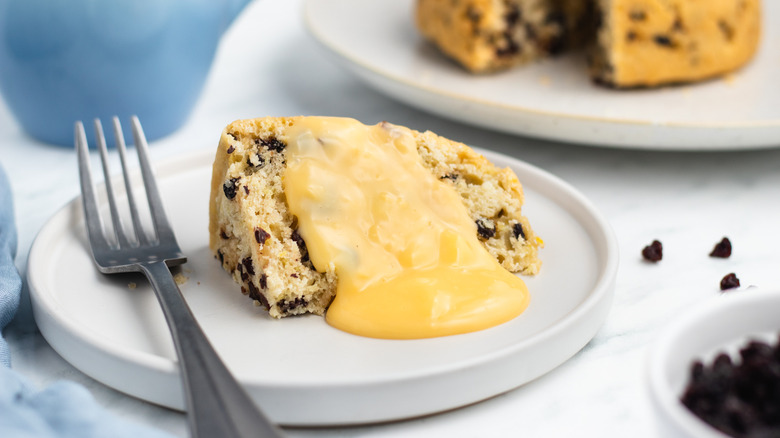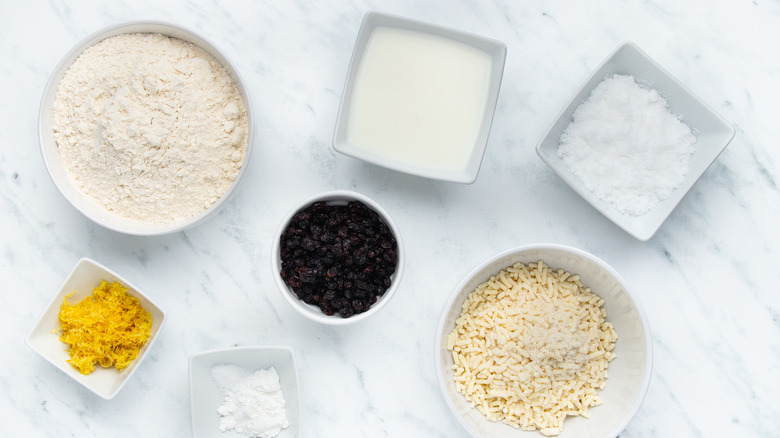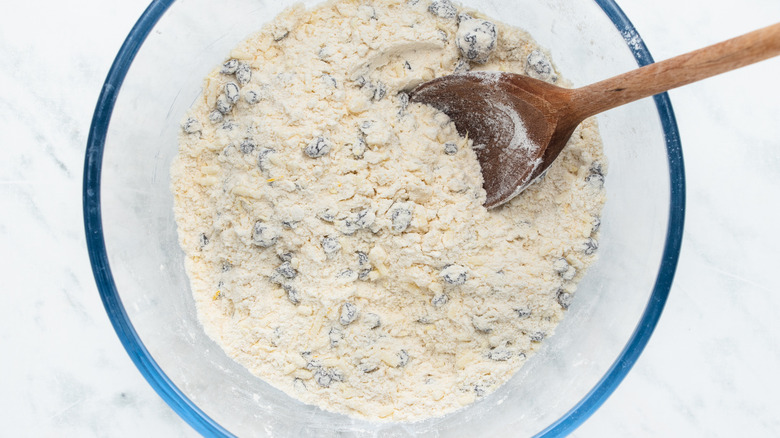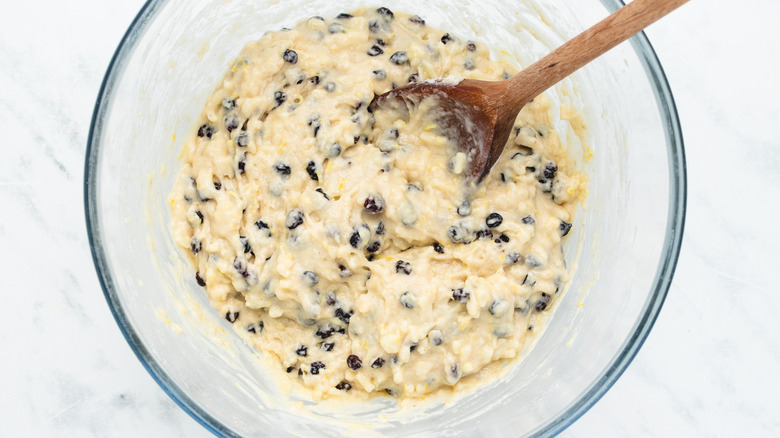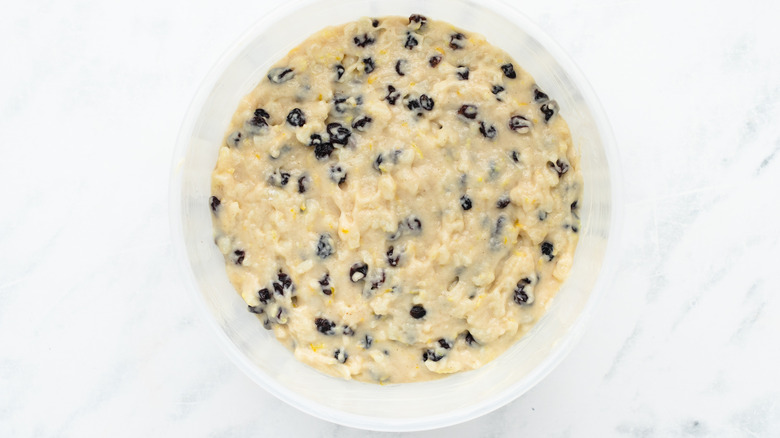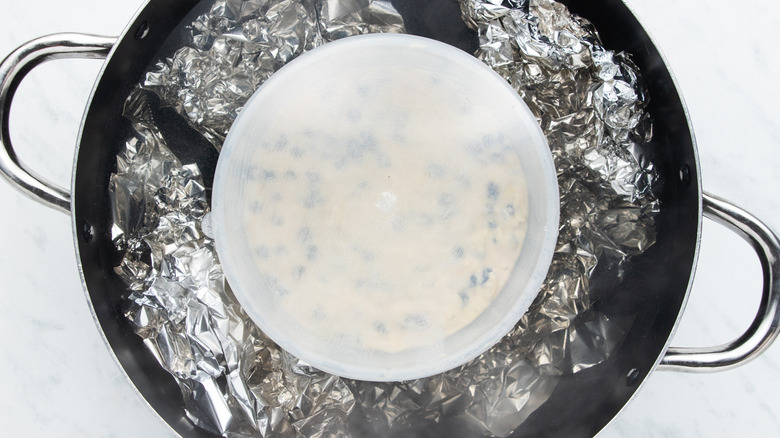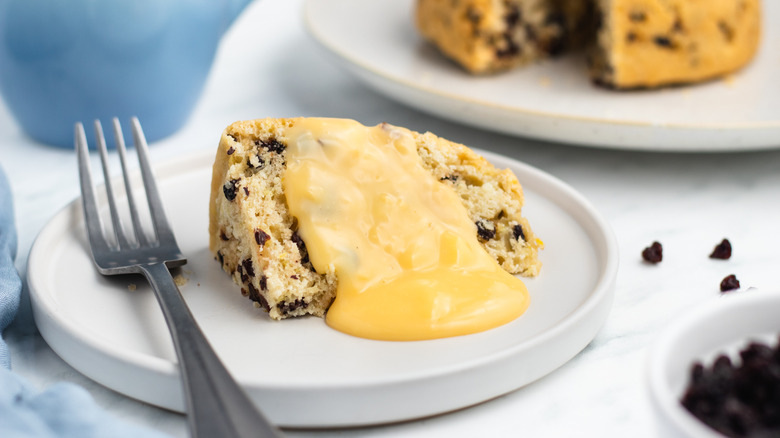Traditional Steamed Spotted Dick Recipe
Cookies and cakes may make wonderful desserts, but if you are looking for a sweet treat that is slightly outside of the box, then this steamed spotted dick recipe may be right up your alley. In case you didn't know, spotted dick is the name for this traditional British pudding that you serve warm after letting the pudding simmer for an hour and a half. The spots in the pudding are raisins or other types of dried fruit, which truly put the "spotted" in spotted dick. Unlike pudding in the United States, this features more of a cake-like consistency.
Recipe developer Catherine Brookes of Blue Sky Eating came up with this traditional steamed spotted dick that will change how you eat pudding. "This recipe is such a classic British dessert that is perfect served with a big dollop of custard! It's fruity, zesty, moist, and sweet," Brookes raves. "This is a perfect pudding to enjoy in winter, perhaps with a family Sunday lunch." Don't let the name scare you away — odds are, the whole family will enjoy this uniquely-named treat.
Gather the ingredients for this traditional steamed spotted dick recipe
If you love to bake, you may already have several of the necessary ingredients at home. Be sure to pick up shredded beef suet, all-purpose flour, salt, baking powder, dried currants, sugar, lemon zest, and milk. "Using suet instead of butter helps to keep the pudding more moist in texture," Brookes notes.
Mix the dry ingredients
Take out a large bowl and start adding the dry ingredients. This includes the suet, flour, salt, baking powder, lemon zest, and dried currants. Use a spoon to mix everything well and combine.
Add the milk
Add the milk to the dry ingredients in order to form a dough. Once added, continue mixing the two together until the mixture becomes thick and sticky. That's a sign that you are ready to move onto the next step.
Transfer mixture to pudding basin
Take out a 2-pint plastic pudding basin and lightly grease it to help prevent anything from sticking. Then, transfer the pudding mixture into the basin and place the lid on top.
Add pudding basin to pot and simmer
Add a few pieces of scrunched-up foil or a cloth in the bottom of a large pot — just make sure the pot has a lid. This will help prevent the pudding basin from moving around too much. Place the pudding basin inside the pot and fill it with boiling water. Be sure only to cover ⅔ of the way up the basin.
Put the lid back on the pot and allow it to simmer for 1 hour and 30 minutes. Once the timer goes off, use caution and oven gloves to remove the basin from the pot. Then, let it stand for 10 minutes.
Serve and enjoy
Turn the pudding onto a plate, and serve it when it is nice and warm. You can also add custard on top if you wish. "This pudding is also great served with fresh whipped cream, crème fraîche, or ice cream," Brookes notes.
Another bonus? You can enjoy it in the days after you make it. "Leftovers should keep well in the fridge up to 3 days," Brookes shares. "You can reheat portions in the microwave."
Traditional Steamed Spotted Dick Recipe
In spite of its unique name, this steamed spotted dick is a delightful, cakey pudding that makes for a tasty dessert.
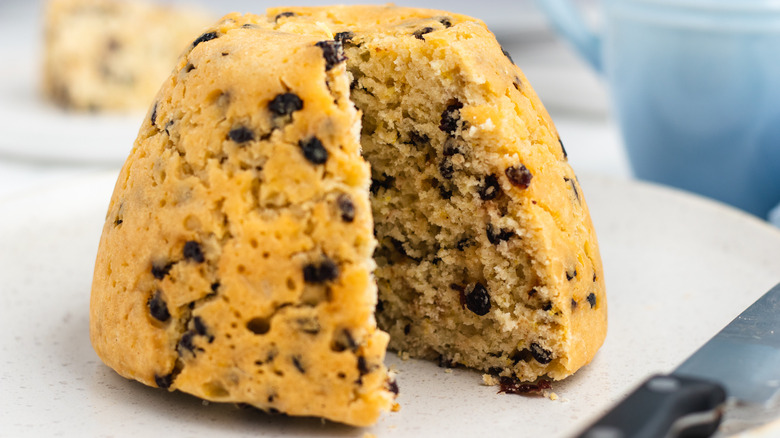
Ingredients
- 4 ounces shredded beef suet
- 2 cups all purpose flour
- ¼ teaspoon salt
- 2 teaspoons baking powder
- ¾ cup dried currants
- ½ cup sugar
- zest of 1 lemon
- 1 cup milk
Directions
- Mix together the suet, flour, salt, lemon zest, baking powder, dried currants, sugar, and lemon zest in a large bowl.
- Add the milk and mix until you have a thick, sticky mixture.
- Transfer the mixture to a lightly greased 2-pint plastic pudding basin and place the lid securely on top.
- Place a few pieces of scrunched up foil or a cloth in the bottom of a large pot with a lid (these help to stop the pudding basin from moving around too much). Place the pudding basin on top and fill with boiling water until covering ⅔ of the way up the basin.
- Place the lid on the pot and leave with the water simmering for 1 hour 30 minutes.
- Using oven gloves carefully remove the basin from the pot and leave to stand for 10 minutes. Then turn out onto a plate and serve with warm custard if desired.
Nutrition
| Calories per Serving | 343 |
| Total Fat | 14.7 g |
| Saturated Fat | 8.0 g |
| Trans Fat | 0.0 |
| Cholesterol | 12.7 mg |
| Total Carbohydrates | 48.8 g |
| Dietary Fiber | 2.0 g |
| Total Sugars | 23.4 g |
| Sodium | 179.5 mg |
| Protein | 5.0 g |
